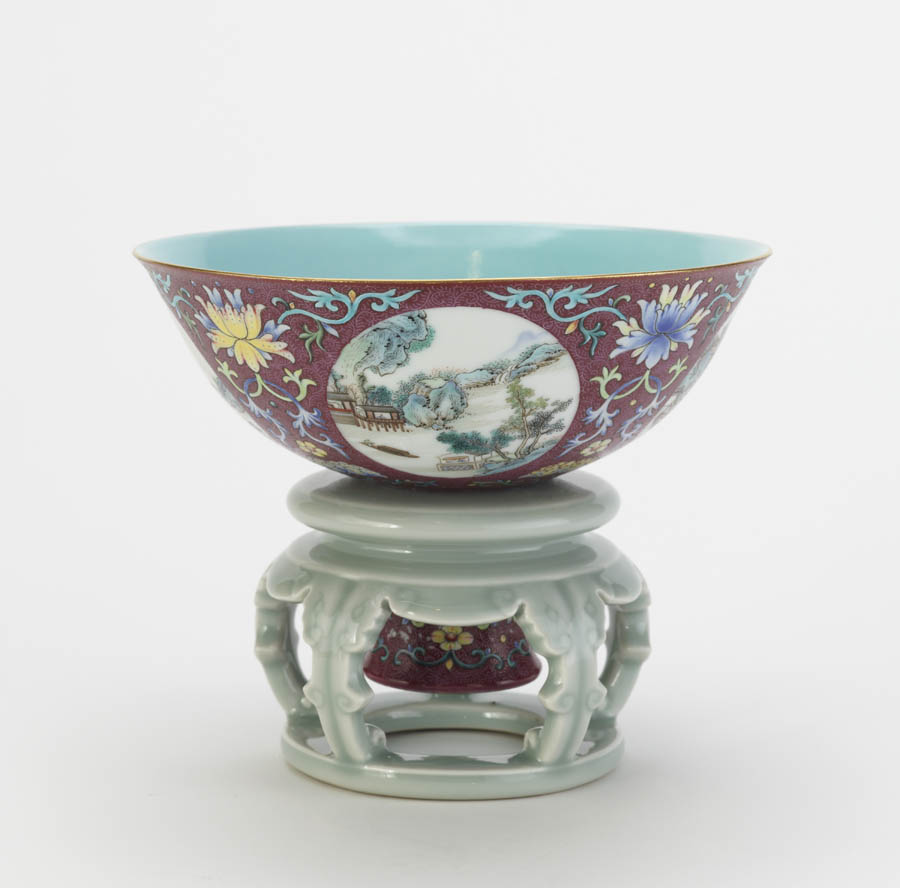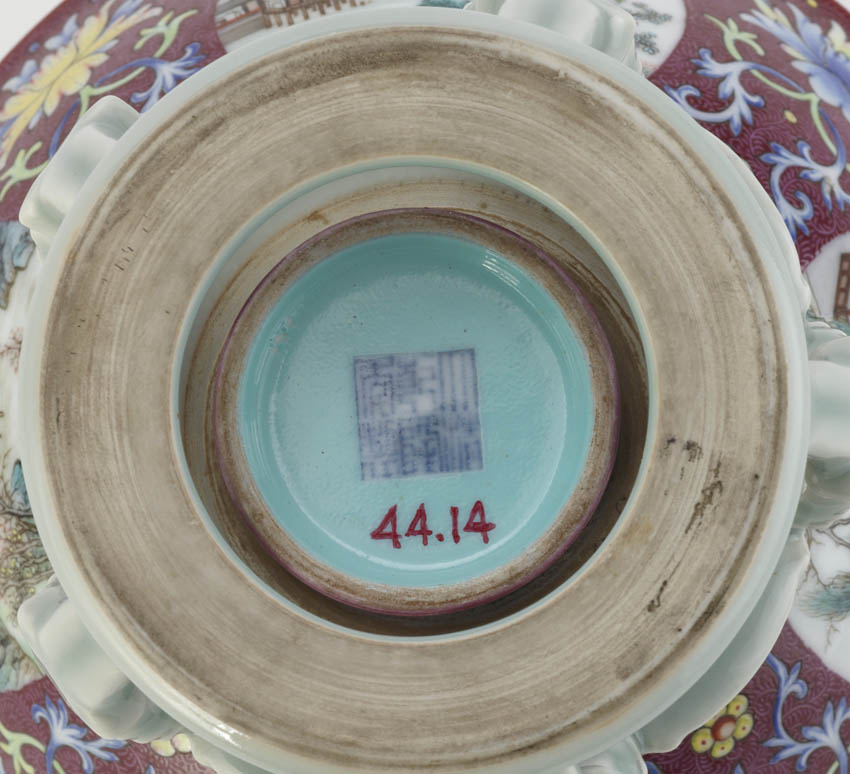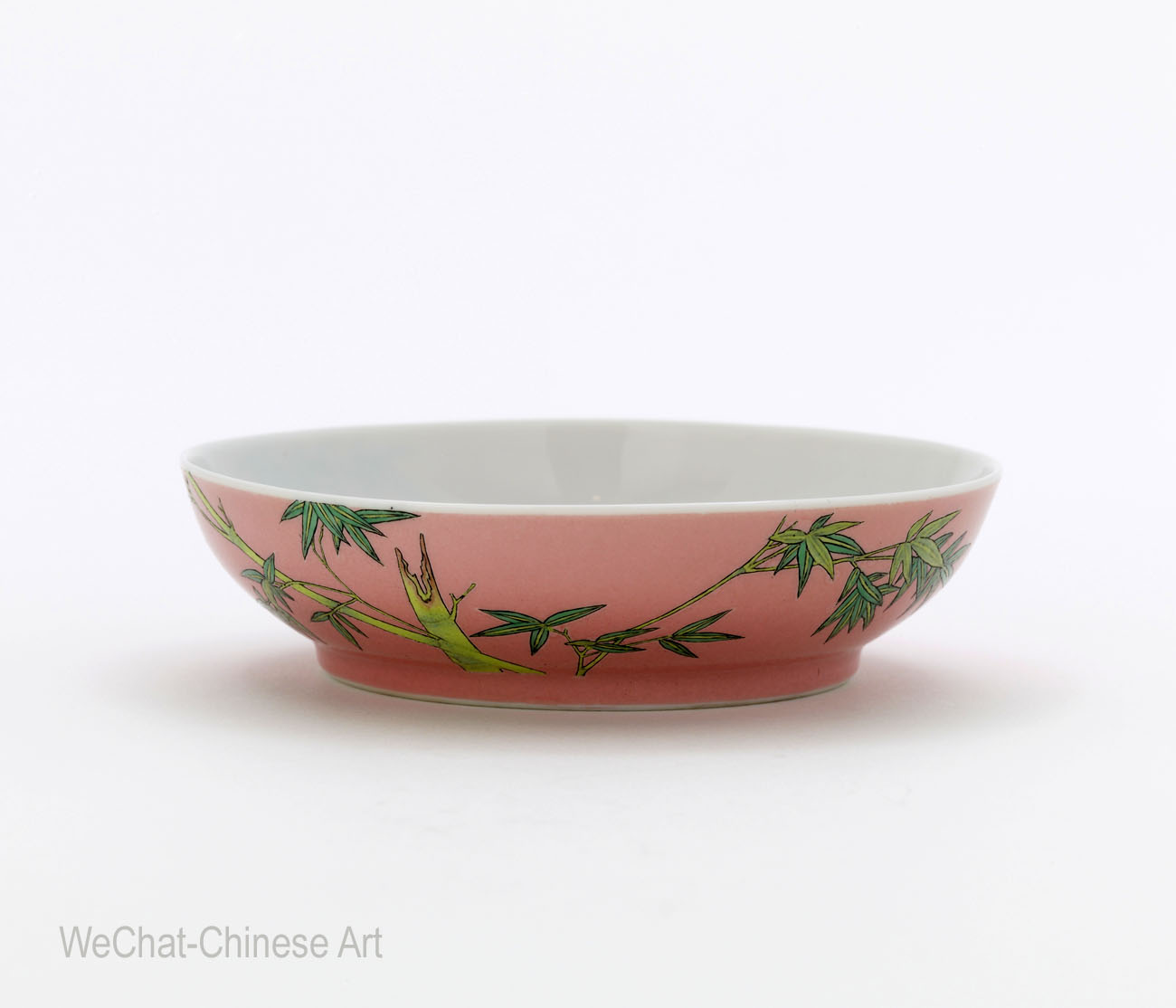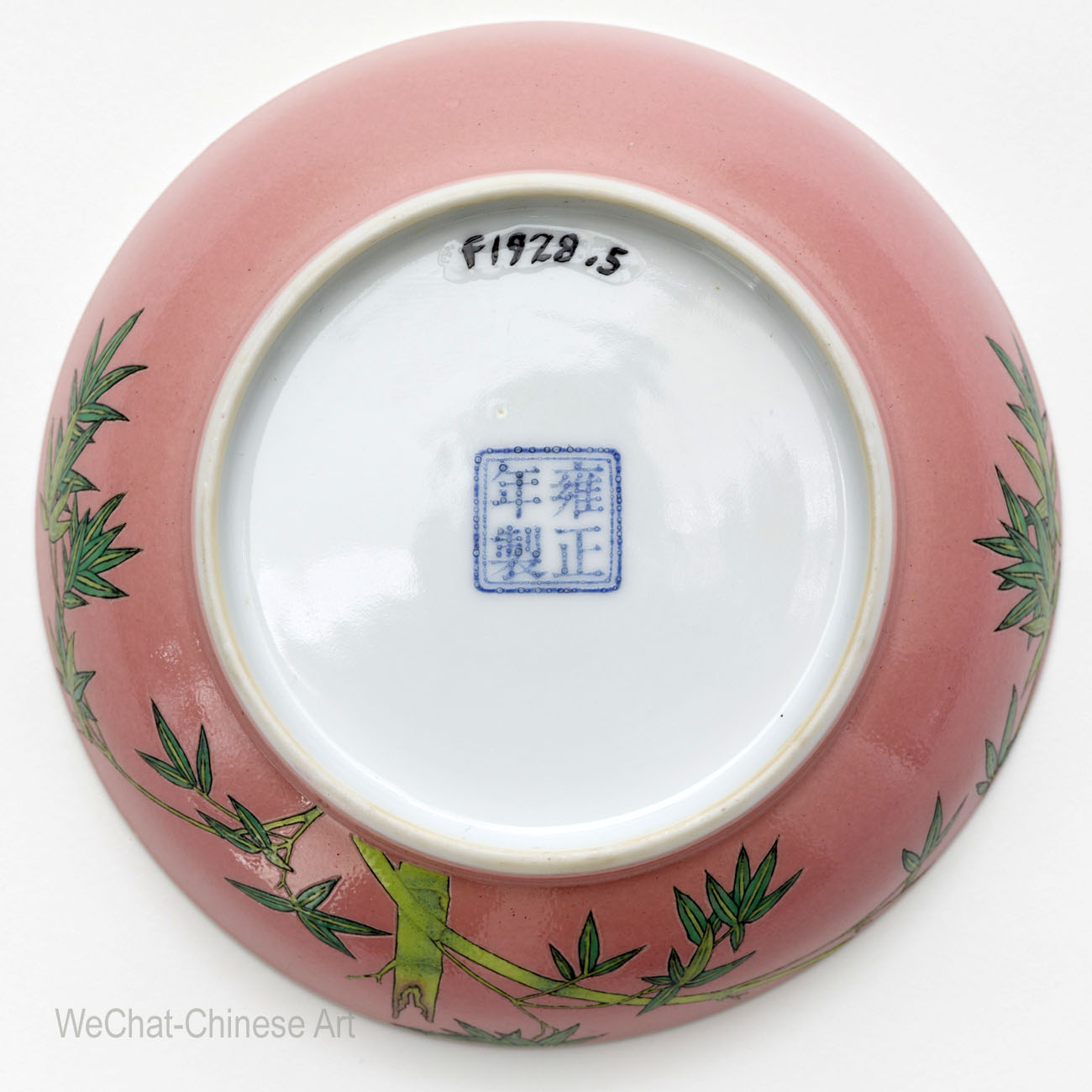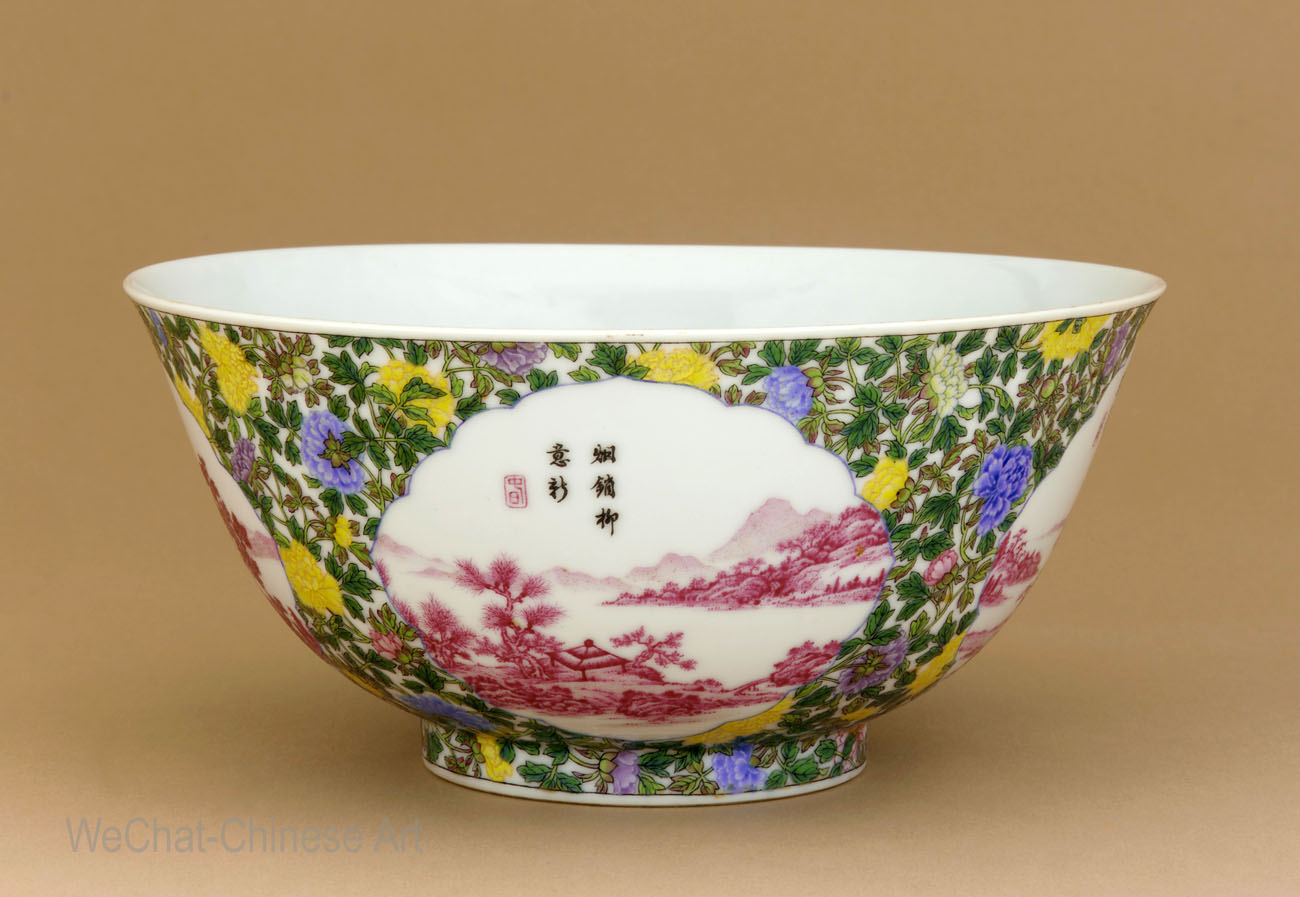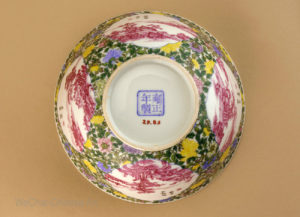Qing Enameled Porcelain for the Imperial Court
Chinese Qing Enameled Porcelain in Museum Collections
Qing enameled porcelain made for the Imperial household took an enormous turn in development towards the end of the Kangxi period in 1716. Within a matter of a decade what was once considered impossible, not only was possible but elevated the quality of porcelain manufacture to levels never before seen. While the making of fine porcelain has long been established over hundreds of years before hand, the palate of colors available remained limited until the early 18th C. . Until then they worked with doucai, wucai, sancai, underglaze blue, famille verte-jaune, iron red and a few others.
Yancai Qing Enameled Porcelain, “Famille Rose”
During the last years of the Kangxi reign and the start of the Yongzheng period the ability to produce Yangcai or Famille-Rose enamels changed forever the Chinese ceramics industry. The term Yangcai translates into “foreign colors” and was named after German chemist Andreas Cassius (circa 1670) when he made a mixture containing precipitate of gold which resulted in the first pink enamel. Only a few examples exist in Yangcai with the Kangxi mark on them, a pitcher, a few bowls and an incense burner now in the National Palace Museum Taipei.
Revolving Stem Bowl on Stand
Qianlong reign, 1736-1795
DIMENSION(S)H x W: 13.5 x 16.3 cm (5 5/16 x 6 7/16 in)
Collection: Freer Gallery of Art, Sackler Purchase
A superb and very rare Qing enameled porcelain bowl on a revolving celadon glazed stand. These fascinating and very complex porcelains were a particular favorite of the Qianlong emperor for their beauty as well as the technical skills employed to create them. This clever innovation is reflective also of the Qing emperor’s appreciation of stem cups from the Song dynasty but executed in a totally new way through the incorporation of the porcelain stand in the shape of a table.
The view of the bottom reveals the Qianlong square seal mark in underglaze blue and framed by a turquoise ground. The mark is in the bottom of the Cup and not the stand. The unglazed base of the stand is slightly concave and neatly trimmed and left unglazed.
During the last years of the Kangxi reign and the start of the Yongzheng period the ability to produce Yangcai or Famille-Rose enamels changed forever the Chinese ceramics industry. The term Yangcai translates into “foreign colors” and was named after German chemist Andreas Cassius (circa 1670) when he made a mixture containing precipitate of gold which resulted in the first pink enamel. Only a few examples exist in Yangcai with the Kangxi mark on them, a pitcher, a few bowls and an incense burner now in the National Palace Museum Taipei.
Fine Yongzheng Floral Decorated and Poem Inscribed Bowl
Qing dynasty, Yongzheng reign mark and period, 1723-1735
H x W: 13.5 x 16.3 cm (5 5/16 x 6 7/16 in)
Former Collection of the Yamanaka Co.
An extremely rare and fine floral decorated shallow bowl executed in rich famille rose and deep green enamels. This bowl was most likely made under the directorship of Tang Ying at the Imperial kiln during the later years of Yongzheng's reign. The four character mark in overglaze enamels was first seen on Kangxi (1661-1722) era bowls and was continued onward.
Note: during the early 20th C. numerous copies were made using the same mark also in thin eggshell porcelains. They, however, lack the incredible quality of the originals.
The poem reads:
"On a beautiful day, the fragrant clusters display auspicious colors."
Guyuexuan Enamel Dish, Flowering Trees, a Poem (The Three Perfections)
Qing dynasty, Yongzheng reign mark and period, 1723-1735
Purchase -- Charles Lang Freer Endowment
Decorated on this bowl are carmelia and flowering plum trees, which in Chinese tradition represent Spring and/or renewal. The inscription on the dish , a poem is a metaphor making a comparison of delicate spring flowers to women.
"Lightly made up and casting scattered shadows, they lean toward each other."
An extremely rare Qing enameled porcelain. The importance of this dish in Chinese culture beyond it's extraordinary quality is also that it incorporates the "Three Perfections" by combining on it's surface; poetry, calligraphy and fine painting.
Pink Enamel Ground Bamboo Bowl
Qing dynasty, Yongzheng reign mark and period, 1723-1735
Guyuexuan ware
H x W: 2.8 x 10.7 cm (1 1/8 x 4 3/16 in)
This superb Qing enameled porcelain bowl decorated on a soft pink with black outlined bamboo stalks and leaves in two shades of green exemplify the superb effects possible with perfect color values and delicate workmanship. The porcelain is of near perfection as is indicated by its total whiteness.
Millifleur and Landscape Inscribed Bowl
Qing dynasty, Yongzheng reign mark and period, 1723-1735
Guyuexuan ware
H x W: 7.5 x 15.9 cm (2 15/16 x 6 1/4 in)
Provenance:
This superb bowl not only illustrates The Three Perfections of painting, caligraphy and poetry, the landscape scene is executed in the
manner of a Chinese classical scroll allowing the viewer to view it through a lotus flower opening. The following the poem on the side which reads :
"Beneath snowy bamboo, wintry green." is the word "Winter"
Yongzheng Mynah Bird Decorated Bowl
Qing dynasty, Yongzheng reign mark and period, 1723-1735
Porcelain with enamels over clear, colorless glaze
H x W: 4.6 x 8.1 cm (1 13/16 x 3 3/16 in)
Prov. C.T. Loo & Company
A superbly decorated and perfectly potted bowl on a raised foot like several of the above also ie the embodiment of The Three Perfections. The bowl depicts a group of five Mynah birds perched on autumn branches. The Mynah bird was a favourite of the scholar's garden and often painted on scrolls of the late 1600's, frequently depicted precariously on rocky outcroppings. The recessed base with a blue enamel overglaze four character Yongzheng reign mark.

